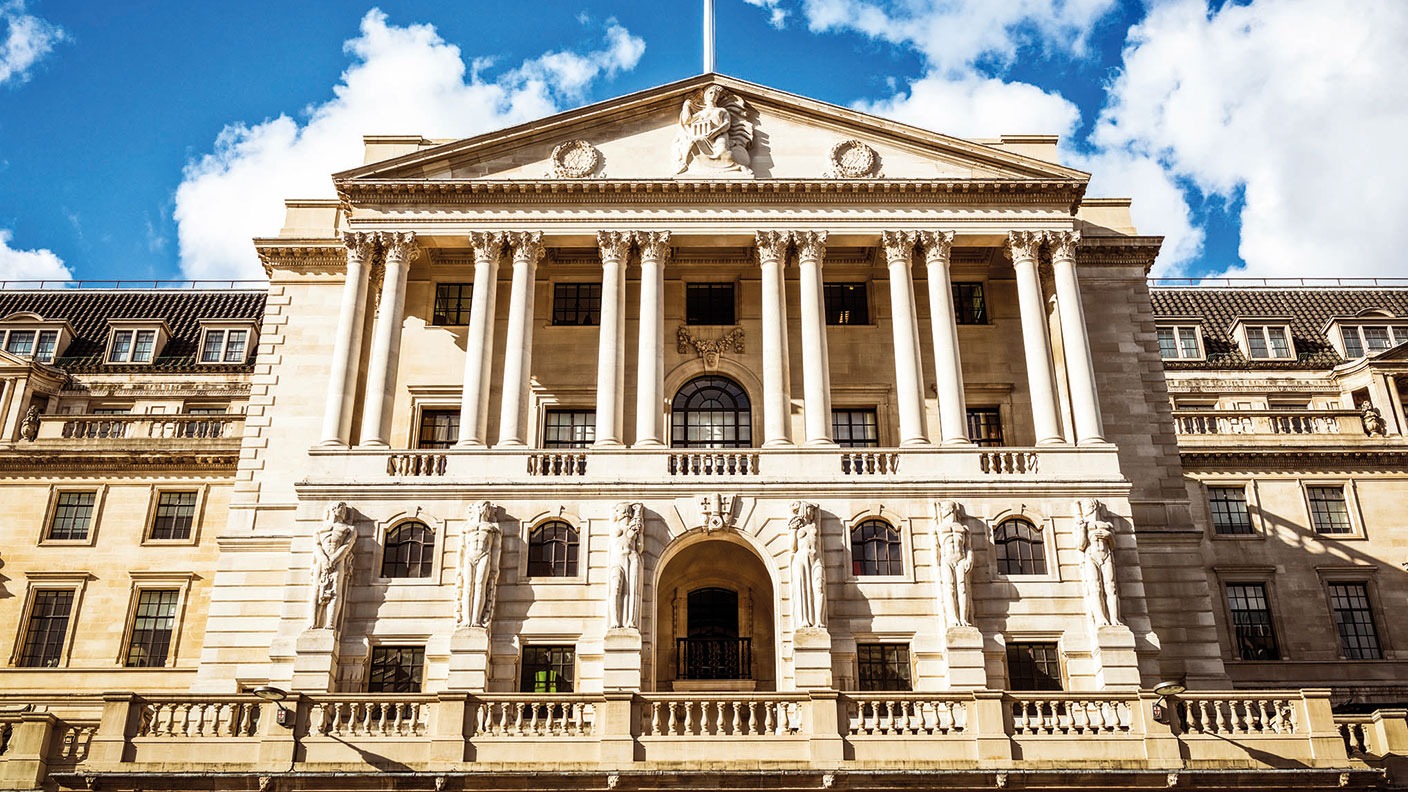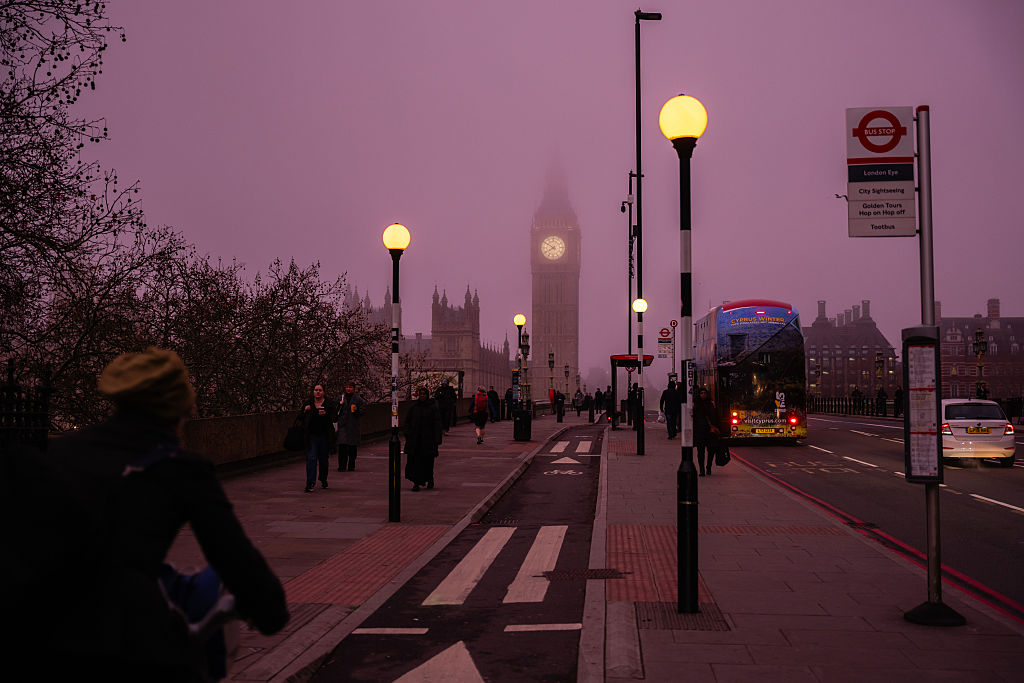Central banks fall far behind the curve on inflation
The Bank of England may have raised interest rates and the US Federal Reserve is tightening policy too, but with inflation soaring, is it too little too late?

“Surprise, surprise!”, says Ipek Ozkardeskaya of Swissquote. Last month the Bank of England failed to raise interest rates despite market bets that it would. This month it has pulled the reverse trick, becoming the first big central bank to raise the cost of borrowing. The 0.15 percentage point rise to 0.25% came despite market bets that Omicron-related uncertainty would cause the Bank to keep policy steady. With inflation at an annual rate of 5.1% and predicted to hit 6% next April, the Bank decided it didn’t have the luxury of waiting for more clarity about Omicron.
Fighting for credibility
The interest rate rise is so “marginal” that it is “frankly… unlikely to make much of a difference”, says Jeremy Warner in The Daily Telegraph. All the same, it is an important signal of intent. After a year spent making increasingly unconvincing excuses for soaring inflation, Threadneedle Street needed to head off speculation that its real objective is to keep government borrowing costs low. The Bank has now shown that “it won’t back excessive spending forever”.
Even those of us who have long supported tighter policy must admit that “this was not a great time” to start raising rates, says David Smith in The Sunday Times. UK “growth was stagnating even before Omicron” and inflation has surged, suggesting a “touch of… stagflation”. The service sector is having a nightmare before Christmas. “By raising rates at a difficult time”, the Bank has at least “won back” some of its lost credibility as a central bank that takes inflation seriously.
MoneyWeek
Subscribe to MoneyWeek today and get your first six magazine issues absolutely FREE

Sign up to Money Morning
Don't miss the latest investment and personal finances news, market analysis, plus money-saving tips with our free twice-daily newsletter
Don't miss the latest investment and personal finances news, market analysis, plus money-saving tips with our free twice-daily newsletter
“Omicron or no Omicron”, the Bank had no choice but to raise interest rates, says Liam Halligan in The Daily Telegraph. Inflation is more than two times the 2% target. November’s rate-rise-that-wasn’t debacle had raised serious questions about Threadneedle Street’s willingness to both raise the Treasury’s borrowing costs and to upset market traders, who love easy money. Credibility is “a must-have for any effective central bank”: if businesses and consumers come to believe that authorities will never act against inflation then it will become “a self-fulfilling prophecy”.
Fed turns hawkish
The US Federal Reserve is also in tightening mode. It says it will reduce its monthly asset purchases twice as fast as previously planned. That leaves the Fed on course to wind up its quantitative-easing programme (whereby it buys bonds with printed money) and start raising US interest rates next spring. The Fed’s latest projections show it plans to raise interest rates up to three times during 2022.
For all the fanfare about its newfound hawkishness, “the Fed has effectively committed not to raise rates above 1% in 2022”, says Philip Pilkington on Unherd. Yet annual US inflation is 6.8%. “I do not envy the job of central bankers these days.” Policymakers are stuck between the rock of raising rates sharply, which will cause a market crash, and the hard place of doing nothing, which will let inflation rip. The Fed’s solution? “Magically assuming in their projections that inflation will disappear” by itself.
Get the latest financial news, insights and expert analysis from our award-winning MoneyWeek team, to help you understand what really matters when it comes to your finances.
Alex is an investment writer who has been contributing to MoneyWeek since 2015. He has been the magazine’s markets editor since 2019.
Alex has a passion for demystifying the often arcane world of finance for a general readership. While financial media tends to focus compulsively on the latest trend, the best opportunities can lie forgotten elsewhere.
He is especially interested in European equities – where his fluent French helps him to cover the continent’s largest bourse – and emerging markets, where his experience living in Beijing, and conversational Chinese, prove useful.
Hailing from Leeds, he studied Philosophy, Politics and Economics at the University of Oxford. He also holds a Master of Public Health from the University of Manchester.
-
 The most influential people of 2025
The most influential people of 2025Here are the most influential people of 2025, from New York's mayor-elect Zohran Mamdani to Japan’s Iron Lady Sanae Takaichi
-
 Millions of parents are missing out on up to £720 a year in extra pension cash – are you affected?
Millions of parents are missing out on up to £720 a year in extra pension cash – are you affected?A mum who narrowly missed out on the pension boost said she “never knew the government rule existed” and wants other parents to use it
-
 Market predictions for 2026: Will Dubai introduce an income tax?
Market predictions for 2026: Will Dubai introduce an income tax?Opinion My 2026 predictions, from a supermarket merger to Dubai introducing an income tax and Britain’s journey back to the 1970s
-
 The steady rise of stablecoins
The steady rise of stablecoinsInnovations in cryptocurrency have created stablecoins, a new form of money. Trump is an enthusiastic supporter, but its benefits are not yet clear
-
 Goodwin: A superlative British manufacturer to buy now
Goodwin: A superlative British manufacturer to buy nowVeteran engineering group Goodwin has created a new profit engine. But following its tremendous run, can investors still afford the shares?
-
 A change in leadership: Is US stock market exceptionalism over?
A change in leadership: Is US stock market exceptionalism over?US stocks trailed the rest of the world in 2025. Is this a sign that a long-overdue shift is underway?
-
 Modern Monetary Theory and the return of magical thinking
Modern Monetary Theory and the return of magical thinkingThe Modern Monetary Theory is back in fashion again. How worried should we be?
-
 Metals and AI power emerging markets
Metals and AI power emerging marketsThis year’s big emerging market winners have tended to offer exposure to one of 2025’s two winning trends – AI-focused tech and the global metals rally
-
 King Copper’s reign will continue – here's why
King Copper’s reign will continue – here's whyFor all the talk of copper shortage, the metal is actually in surplus globally this year and should be next year, too
-
 The coming collapse in the jobs market
The coming collapse in the jobs marketOpinion Once the Employment Bill becomes law, expect a full-scale collapse in hiring, says Matthew Lynn